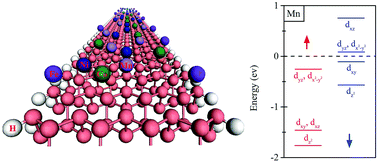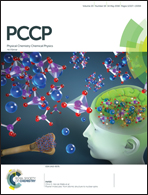Modulation of electronic and magnetic properties of edge hydrogenated armchair phosphorene nanoribbons by transition metal adsorption
Abstract
Based on first-principles calculations, we present a systematic investigation of the electronic and magnetic properties of armchair phosphorene nanoribbons (APNRs) functionalized by 3d transition metal (TM) atoms. We found that the central hollow site is the most favorable adsorption site for Mn, Co and Ni, while Fe preferentially occupies the edge hollow site. All of the TM atoms bind to the adjacent P and their adsorption energies are in the range of −4.29 eV to −1.59 eV. Meanwhile, the large ratio of the adsorption energy to the cohesive energy of the metal bulk phase indicates that TM atoms have a preferred 2D growth mode on the edge hydrogenated armchair phosphorene nanoribbons (H-APNRs). The magnetic moments reduce by about 2–4 μB, relative to their free atom states, depending on whether the TM atom is in the high-spin or low-spin state. This reduction is mainly attributed to the electrons transferring from the high-level TM 4s shell to the low-lying 3d shell. Our results demonstrate that TM atom adsorption is a feasible approach to functionalizing the H-APNRs chemically, which results in peculiar electronic and magnetic properties for potential applications in nano-electronics and spintronics.



 Please wait while we load your content...
Please wait while we load your content...